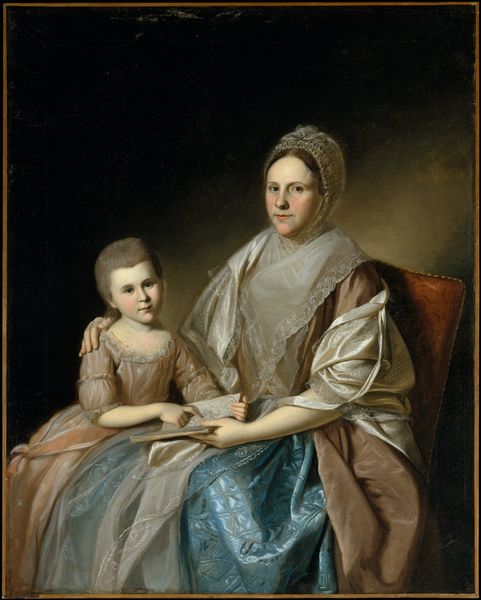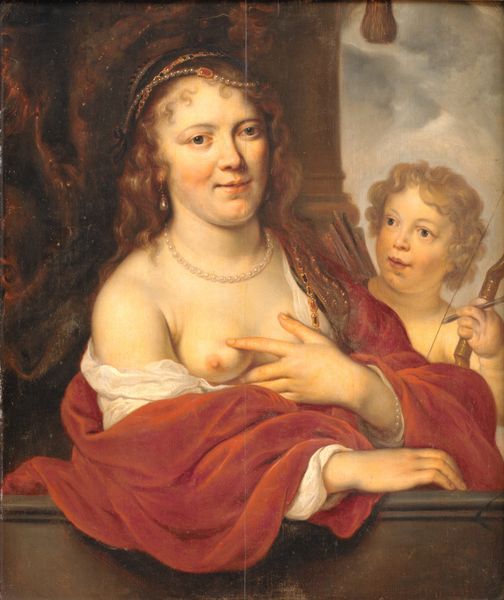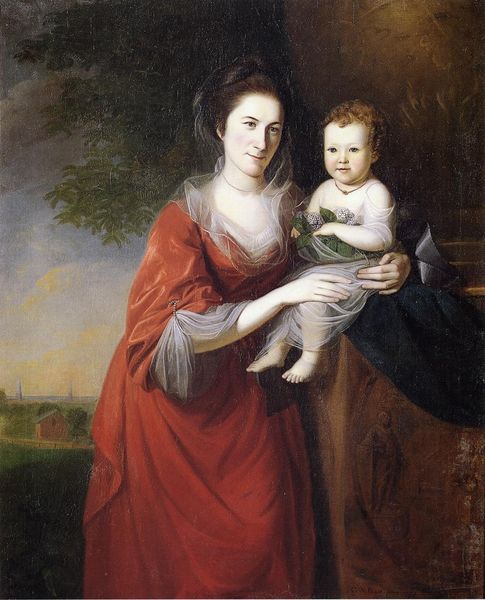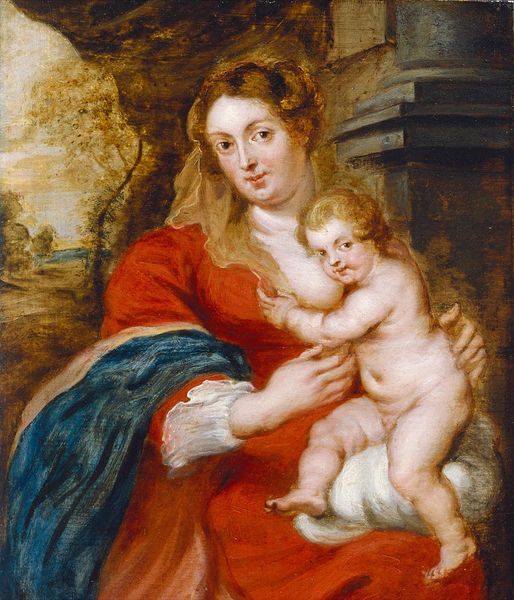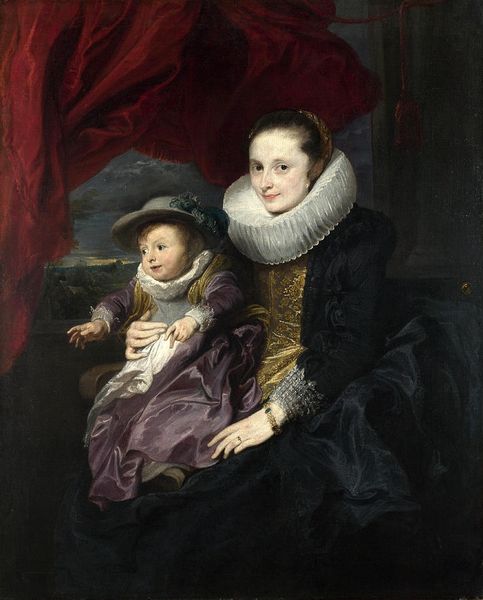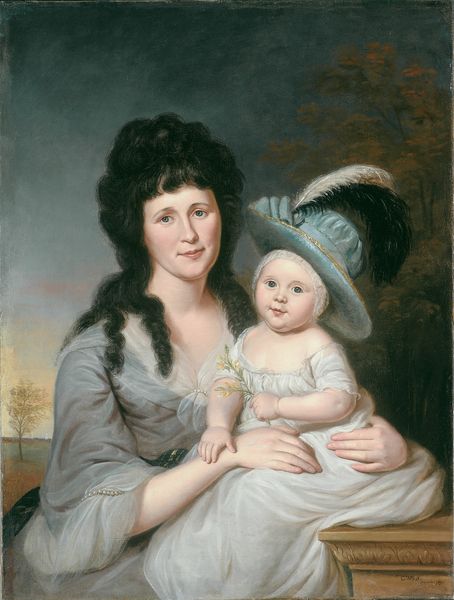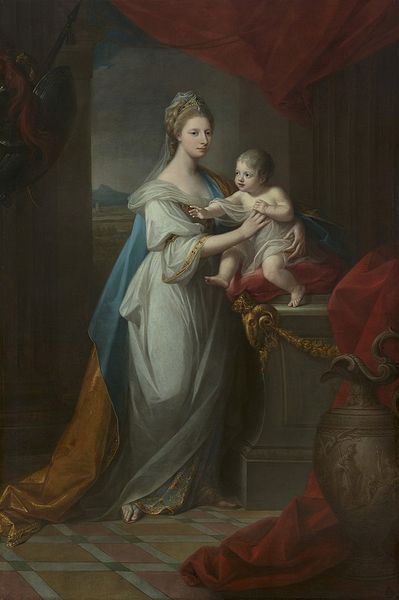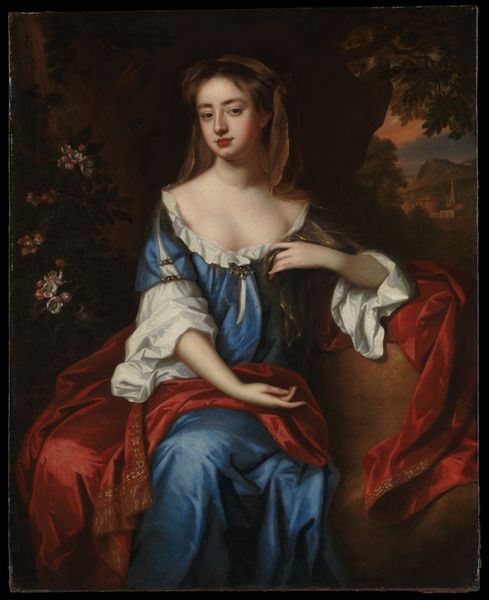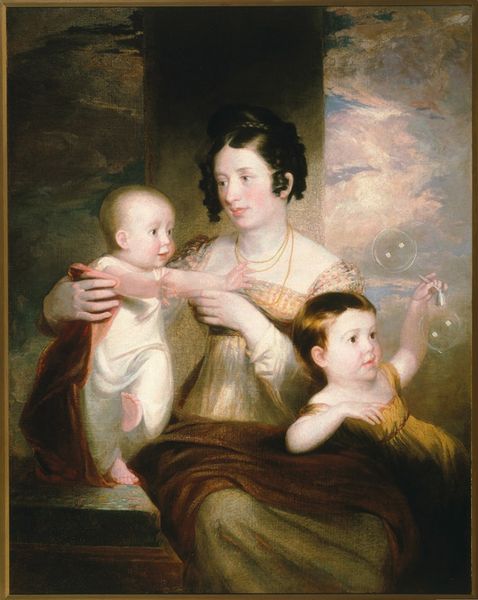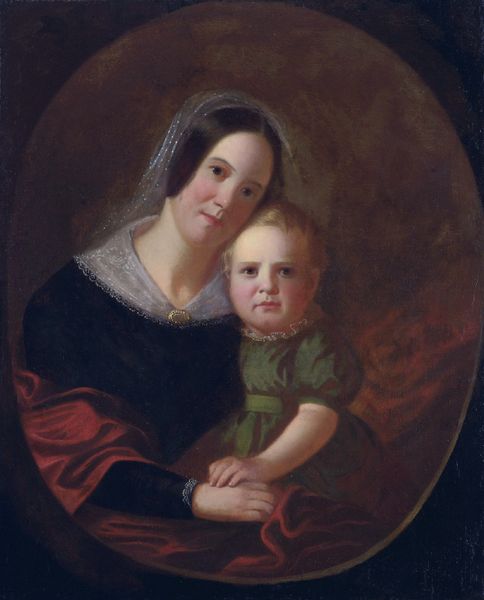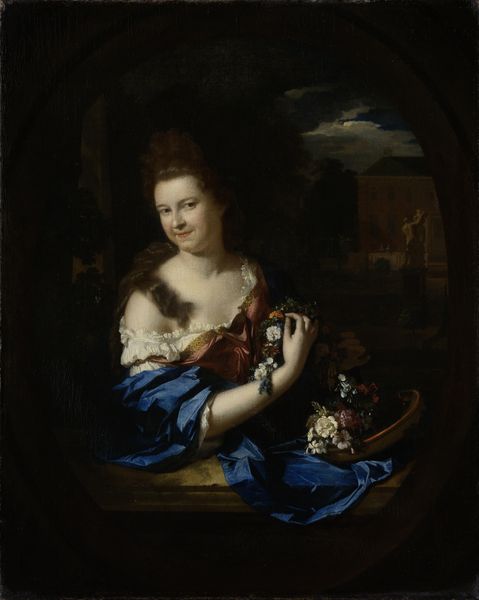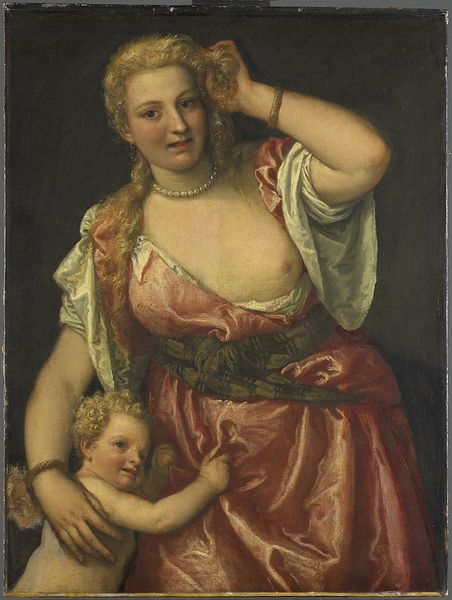
painting, oil-paint
#
portrait
#
baroque
#
painting
#
oil-paint
#
figuration
Dimensions: 50 x 39 1/4 in. (127 x 99.7 cm)
Copyright: Public Domain
Editor: So, this is John Smibert's "Mrs. Francis Brinley and Her Son Francis," painted in 1729. It's currently hanging in the Metropolitan Museum of Art, created with oil paint. It strikes me as a pretty standard, albeit tender, portrait of a mother and child. How do you interpret this work? Curator: On the surface, it’s a rather conventional representation of motherhood, yes, but it’s critical to unpack what that convention signified within the socio-political landscape of colonial America. This portrait isn’t simply about maternal affection. Consider, who were the sitters, and what class do you think they belonged to? Editor: Wealthy, right? I mean, based on their clothing, it suggests they are of a certain class. Curator: Precisely. These portraits served to affirm social status, familial legacy, and, crucially, the role of women in maintaining the colonial order. Her primary role in colonial society was the creation of heirs. Editor: So, this portrait serves as a statement about the Brinley family's position within the emerging American class system? Curator: Absolutely. And consider the fruit! That citrus and her positioning beside the growing plant might underscore themes of wealth and future growth for the Brinley family. Do you think the painter sought to celebrate ideals such as those of a stable lineage and an industrious colonial enterprise? Editor: It makes me consider portraits with an intention to broadcast the ideals and values of that period. I never considered all those political dynamics! Curator: It encourages us to view artworks not just as aesthetic objects, but as complex visual documents.
Comments
No comments
Be the first to comment and join the conversation on the ultimate creative platform.
